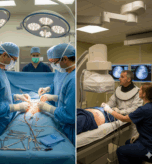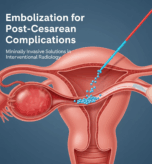Lung Tumour Ablation: A Minimally Invasive Alternative to Surgery
Introduction
For many patients, lung tumour ablation represents an innovative and less invasive alternative to surgery—especially when surgery isn’t possible or desired. This treatment delivers targeted energy (heat or cold) directly to tumours, offering hope in situations where traditional operations aren’t an option. So under the expert care of Dr. Vrishit Saraswat, patients can expect world-class treatment designed for their needs.
What Is Lung Tumour Ablation?
A state-of-the-art, minimally invasive procedure that is revolutionising cancer care is lung tumour ablation. Under the guidance of sophisticated imaging, surgeons eliminate tumours directly inside the lung using heat, cold, or electrical energy in place of traditional surgery. Patients who are unable to have surgery because of their age or health issues will particularly benefit from this method. The accuracy—ablation just targets the tumour, protecting healthy tissue, minimising pain, and accelerating recovery, which is what makes it so intriguing. Lung tumour ablation offers optimism, creativity, and a fresh approach to the battle against lung cancer because of its shorter hospital stays and encouraging outcomes.
Tumour ablation for lung cancer uses methods like radiofrequency ablation, microwave ablation, or cryoablation, guided by imaging like CT scans to precisely target and destroy cancerous cells. These minimally invasive treatments are ideal for early-stage cases or patients with co-existing lung conditions, making surgery risky (Macmillan Cancer Support, Wikipedia). Unlike extensive surgery, ablation typically requires only a short hospital stay and allows a quick return to daily life.
At the forefront of this field is Dr. Vrishit Saraswat, a nationally recognised interventional radiologist trained at Medanta. His compassionate approach ensures patients feel supported at every step, with personalised care and modern solutions.
👉 Learn more about Dr. Saraswat’s expertise.

Benefits of Lung Tumour Ablation
The advantages of thermal ablation for lung cancer include:
- Reduced risk and faster recovery compared to surgery.
- Minimal impact on lung function, as ablation targets only the tumour and a small surrounding area.
- Effective for patients deemed inoperable due to age, poor lung capacity, or other health issues.
- Treatments such as microwave ablation (MWA) show high local control rates—up to 96% at one year—and promising overall survival: approximately 89% at one year, and 44% at three years (NCBI).
Long-Term Outcomes and Survival Rates
Studies show encouraging survival after lung tumour ablation, especially when treatment is complete:
- In one study of laser ablation for lung metastases, patients treated completely had a median survival of 32.4 months. Their 1-, 2-, and 3-year survival rates were 81%, 59%, and 44%, respectively (AJR Online).
- For cryoablation, five-year overall survival ranged from around 47%–67%, with strong local tumour control (79% at five years) (www.bostonscientific.com).
Risks and Considerations
While generally safe, lung tumour ablation carries some risks:
- Pneumothorax (collapsed lung) is the most common complication and may require temporary drainage.
- Minor side effects include fever, mild pain, or bleeding, occurring in about 10–20% of cases.
- Major complications, such as severe bleeding or infection, are rare (<2–3%), and death related to the procedure is exceedingly rare (~0.1–0.3%).
Ideal Candidates
Ablation is best suited for patients with:
- Early-stage NSCLC (stages I–II) patients who are not surgical candidates.
- Small tumours (usually less than 2–3 cm) that are favorably located.
- Oligometastatic tumours, where only a few lesions are present.
Take the Next Step
If you or your loved one has been advised surgery but is worried about its risks, lung tumour ablation could be the answer you’ve been searching for. With expert hands, modern technology, and compassionate care, it is possible to fight cancer while preserving your quality of life.
📌 Don’t wait—schedule a consultation with Dr. Vrishit Saraswat today. Virtual consults are available for your convenience.
👉 Book your consultation here
FAQ
❓ What are the alternatives to lung ablation?
Answer: Alternatives to lung ablation include surgery (lobectomy or wedge resection), radiation therapy (such as stereotactic body radiotherapy – SBRT), chemotherapy, targeted therapy, and immunotherapy. The best option depends on the tumour’s size, stage, and the patient’s overall health.
❓ What is the success rate of lung ablation?
Answer: The success rate of lung ablation varies depending on the tumour type and stage. For small, early-stage tumours, studies report a local control rate of 80–90%. It is often most effective for patients who are not suitable candidates for surgery due to age or medical conditions.
❓ Is there an alternative to ablation?
Answer: Yes, alternatives include surgery, radiation therapy, and systemic treatments like chemotherapy or targeted drugs. In some cases, a combination of therapies is recommended. Ablation is usually chosen for patients seeking a minimally invasive option or when surgery is not possible.
❓ How long does it take to recover from lung ablation?
Answer: Recovery from lung ablation is typically shorter than surgery. Most patients can return home the same day or within 24–48 hours. Mild chest discomfort or fatigue may last for a few days, but many people resume normal activities within one to two weeks.






